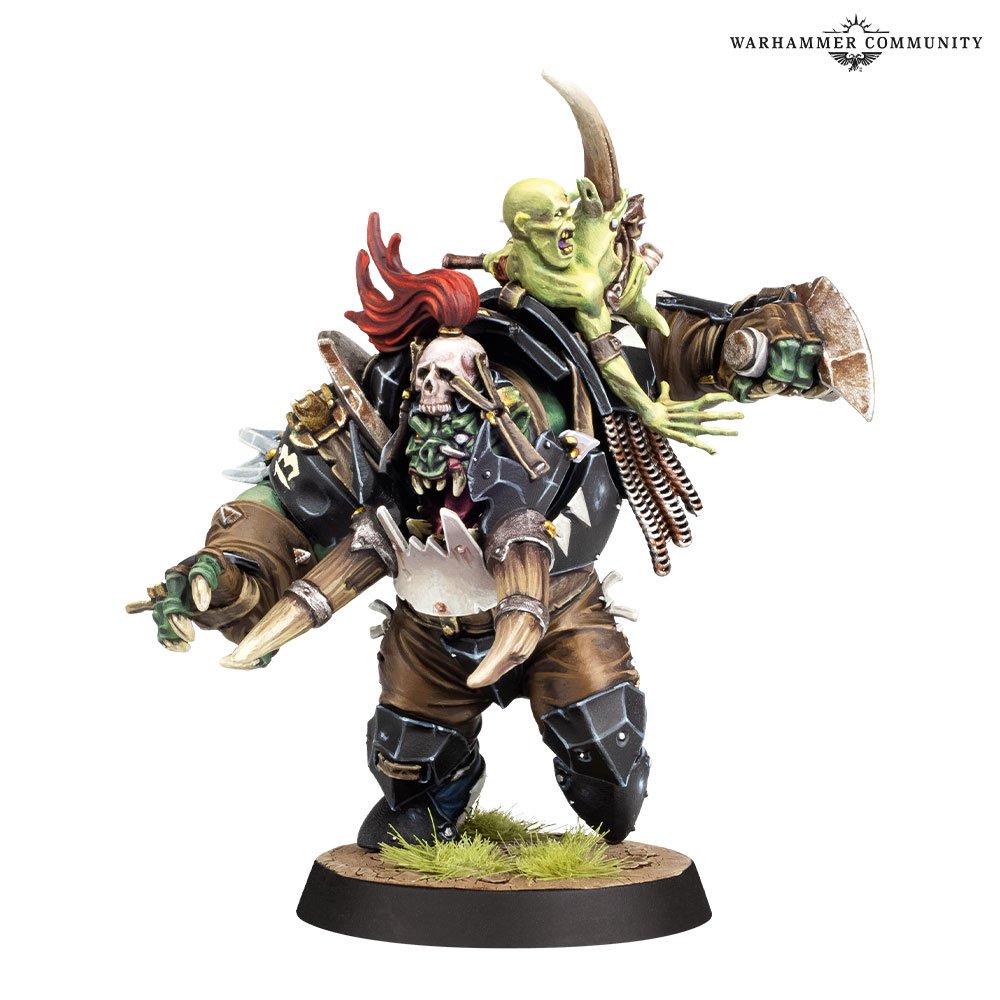
“You still have to manage your rerolls for eight turns. It’s a change that has the potential to make a match both more dynamic and more farcical. In Blood Bowl 3, for the first time, you can make several rerolls in a single turn. Risk management, therefore, is the name of the game - and the careful application of rerolls is a key skill when it comes to navigating the chaos of probability, ensuring your most crucial plays come off as intended.
#BLOOD BOWL 2 ORC GUIDE SERIES#
A series of early turnovers is almost guaranteed to lose you a match. They’re a critical aspect of the game, since every failed throw, catch, or haymaker in Blood Bowl results in a turnover, immediately ending your turn and passing control to the other team. Perhaps most significantly, Games Workshop has changed the rules around rerolls - the limited number of chances you get to correct a failed move. “But it has changed enough to require a new game and to feel different.” “It hasn’t changed fundamentally,” he says. While I couldn’t immediately appreciate Games Workshop’s recent rules tweaks as a lapsed player, Brésard points to a new passing ability, and the fact that any unit can now jump over a prone or stunned counterpart, opening up new tactical movement options. A Warhammer rival to Madden NFL may top the charts yet. “That’s something that we may try again in the future,” Brésard says. “I wouldn’t say that Death Zone was a success.” But the studio holds onto its “crazy ideas”, and evidently believes in this one’s potential. “As soon as you start deviating from the official formula that worked for 40 years, it’s much harder to make something that works,” Brésard says. Over the years, Cyanide has made more than one attempt at a real-time Blood Bowl, most recently with Death Zone. And Games Workshop wanted us to make a new one as well, to follow their new lines of miniatures.” Madden science “Obviously, we want to have a Nacon Blood Bowl. “Cyanide has been bought by Nacon - before we worked with Focus Home Interactive,” Brésard points out. There are, of course, commercial reasons for building another sequel as well. “It would have been very, very hard to change it to comply with the new rules, and also to be able to have a more visually stunning experience. “It was hard to continue to iterate,” Brésard says. This new version felt like neither a mechanical nor presentational leap forward - at least, not in any sense I could detect as a fairweather player of high fantasy football.īehind the scenes, though, Blood Bowl 2’s in-house engine had gone as far as it could. Blood Bowl 2 had felt definitive - the perfect way to play an influential 80s classic while letting a clever computer do all the dice maths and notekeeping for you. When I first played Blood Bowl 3 in beta, I couldn’t help but wonder why it existed. So they want us to support this specific version, they don’t want us to be something else. “There are the new rules, there are the new miniatures. “They have this very strong will to bring back Blood Bowl in a more controlled and official environment,” Brésard says. By contrast, Games Workshop has very specific designs for Blood Bowl. We have to abide by what they’re doing.”īrésard previously worked on Space Hulk: Tactics, which was a more liberal interpretation of its Warhammer source material - mixing up the XCOM-esque setup of the 1989 board game with a new card system.

But on the other side, we also have less margin for creativity. “We just have to copy what do, basically. “On the one side it’s easier, in the sense that we have less design to do ourselves,” Brésard says.

It’s a new way of working for the Parisian developer. Brésard is the project manager of the upcoming Blood Bowl 3, which Cyanide has confirmed will use the latest tabletop ruleset, released in 2020. Today, the tabletop and digital versions of Blood Bowl exist in parallel, as closely coordinated as blitzers and blockers. “I have to think that, yes, we played our part in showing Games Workshop the interest of the community in more Blood Bowl.” “It’s always a great thing to be able to showcase and sustain these great tabletop games,” Brésard says. Fans were finally relieved from the responsibility of life support, and joined by a new generation who had discovered the joys of grognard gridiron by competing online.

Soon afterwards, Games Workshop went further - dusting off tabletop Blood Bowl for a new edition. That first game was faithful, if unadorned, and a sequel in 2015 finally delivered the audio-visual crunch to match the mental image of a beastman forcibly lifting an elf into the air with a single punch. Yet in 2009, Games Workshop backed Cyanide in its attempt to recreate Blood Bowl on the PC.


 0 kommentar(er)
0 kommentar(er)
